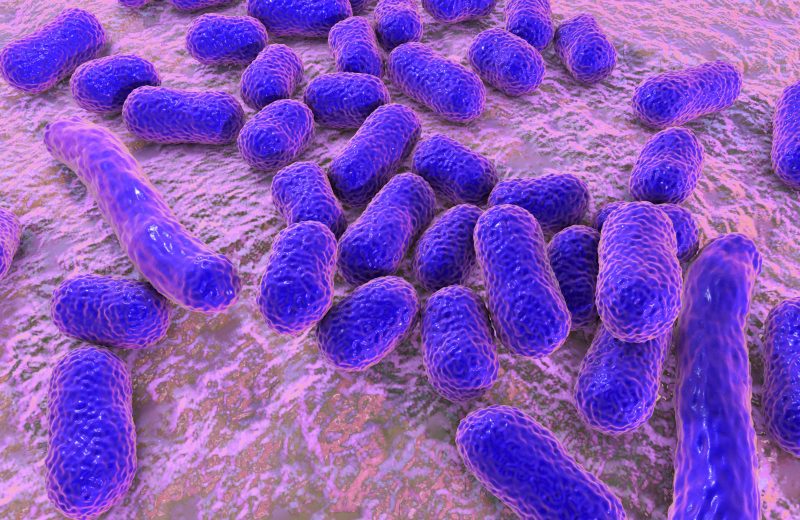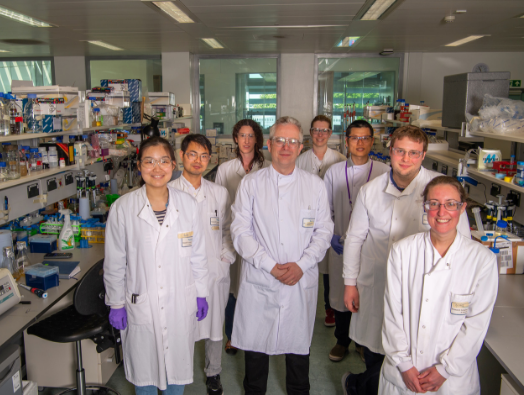First paper from Institute opens new avenues for antibiotic research
In a new paper published in eLife today, a team of researchers led by Professor James Naismith of the Rosalind Franklin Institute have solved the structure of a vital bacterial protein. This discovery could offer new pathway for access to antibiotic treatments, in a pathogen identified as one of the most globally dangerous by the WHO.
Increasing global antibiotic resistance has been identified as one of the most urgent problems in human health. The pathogen investigated in this paper, Acinetobacter baumannii, is a major cause of hospital acquired infection, causing multiple infections in immunocompromised patients. Multi-drug resistant strains have already emerged.

The team led by Professor Naismith have solved the structure of the protein BauA, a receptor which allows the bacteria to absorb iron from their environment. In Acinetobacter baumannii, a peptide which steals iron from the bacteria’s environment is secreted. This peptide is then reabsorbed by binding to BauA, carrying iron into the cell.
This iron uptake pathway has long been identified as a good target for antibiotics – using the cell’s own machinery to smuggle toxic compounds into the bacteria where they can take effect. Unfortunately, without the structure of the BauA receptor, it was not possible to understand which one out of two possible versions of the secreted protein was being taken up, so the pathway could not be used to design new drug treatments.

By solving the structure of the receptor, this doorway into the bacterium has now been opened, and the team hope that new drug compounds will shortly follow. These new treatments will mimic the shape of the secreted protein, using the receptor to gain entry to the bacterial cell. This Trojan Horse tactic, using the bacteria’s own pathways to bring the drug into the cell, offers a powerful mechanism for getting drugs into the right place to have their action, and help to reduce the risk of the drug being toxic to humans.
Professor Naismith said “The next step for this project is to build new drugs using a process known as rational drug design – using the shape of a biological receptor to build molecules which fit perfectly. This approach is vital to generate new drugs against this bacteria, but also in drug design in a broader sense – we need new technologies and approaches, like the ones being developed by the Rosalind Franklin Institute to bring together basic insights into biology with the complex computing, automation and chemistry needed to turn these findings into real medical treatments”
This paper is the very first to be published by the Rosalind Franklin Institute, which will work to develop new technologies to improve the imaging and analysis of biological samples from molecules to cells and tissues. These technologies will transform our understanding of biology, ultimately improving human health.
The structure of the receptor in this work was solved using X-ray beamlines at Diamond Light Source, the UK’s national synchrotron. The synchrotron allows researchers to understand the atomic structures of materials, including proteins, and will work closely with the Rosalind Franklin Institute to develop next generation technologies for life science imaging.
Further Information:
Publication: Preacinetobactin not acinetobactin is essential for iron uptake by the BauA transporter of the pathogen Acinetobacter baumannii. DOI: https://doi.org/10.7554/eLife.42270
A full biography on Professor Naismith is available here.
About the Rosalind Franklin Institute
The Rosalind Franklin Institute is a new national institute dedicated to bringing about transformative changes in life science through interdisciplinary research and technology development. The Institute brings together researchers in life sciences, physical sciences, and engineering, to develop disruptive new technologies designed to tackle major challenges in health and life sciences.
The Institute is an independent charity funded by the UK government through the UK Research and Innovation’s Engineering and Physical Sciences Research Council (UKRI-EPSRC). The Institute is formed through a partnership of by ten leading UK universities and UK Research and Innovation.
The Institute will have its central hub, opening in 2020, at the Harwell Campus, delivered by the Science and Technology Facilities Council (UKRI-STFC). The hub will house a unique portfolio of scientific tools and researchers from both industry and academia. The Institute will work nationally with equipment and researchers located in spokes distributed throughout the partner network of universities.
Working with industrial and academic partners from across the UK, the Rosalind Franklin Institute will foster interdisciplinary research with real impact in imaging, diagnostics, drug development, and many more fields.
@RosFrankInst